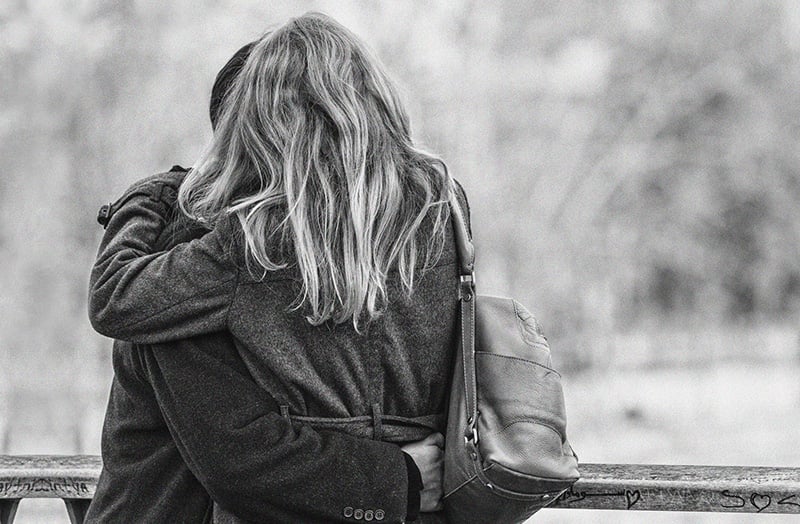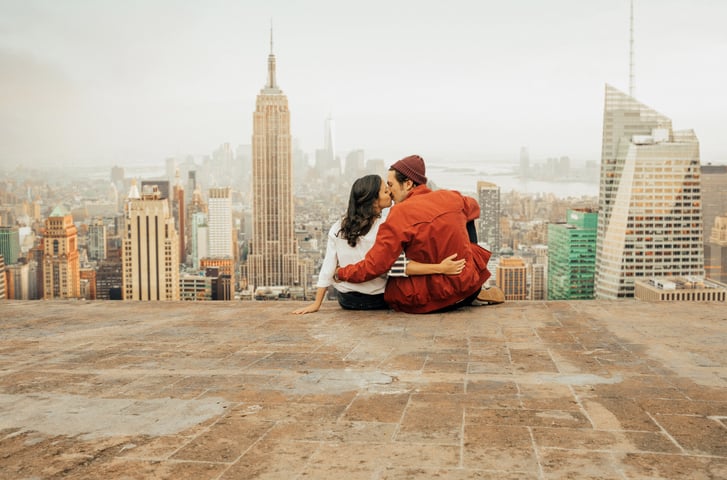
Over the past three years, the world has been and continues to be shaken by the COVID-19 pandemic. The world has been trying to collectively survive something that is new, nerve-racking and life-threatening. Segregation based on viewpoints and values emerged, altering the ways that communities live and operate.
Some were relieved when protective restrictions, such as vaccine mandates, were put in place. Others were anything but thrilled about the perceived infringement on human rights as mandated restrictions were implemented.
Regardless of where people planted their feet, all experienced their own stressors and concerns, ultimately implicating their well-being. For many, there was a baseline threat of developing a potentially fatal virus and spreading it to the people closest to them. Simultaneously, there was the mental toll of trying to understand the virus and its impact; for some, this induced mental distress, manifesting in ways such as increases in alcohol consumption or substance use, worsening of anxiety and/or depressive experiences, and suicidal ideation. For the others, there was immense outrage, confusion, and concern regarding the implementation of policies that would infringe on human rights and have the power to implicate aspects of personal health and well-being forever. Mandates described as coercive impacted community trust in societal systems, such as governments, and mental well-being, demonstrated by feelings such as existential anxiety and immense hopelessness.
Regardless of what thoughts and values we have about the coronavirus, we are all people who are responding to a world that feels like it’s on fire, with no end in sight and no clear path forward. Also, in addition to this baseline collective stress, there also are certain people and populations whose stressors are exacerbated, whether that be due to pre-existing mental health and/or physical health concerns, or systemic inequities such as racism or oppression, all which unequivocally implicate health outcomes to an even greater extent.
In many ways, this intense world on-fire feeling can be described as the experience of complex trauma given the nature of the event and its impact. When people hear the word “trauma,” it is often associated with a large-scale, horrendous event, such as a terrorist attack. But trauma also can be found in the seemingly mundane, creeping up when it is least expected. Complex trauma specifically can develop in any instance where there is an ongoing sense of fear, horror, helplessness or powerlessness over an extended period of time, with the perceived or actual inability to escape. For many, this describes what life has been like during the COVID-19 pandemic; waking up every day and having to participate in life (i.e., raising a family, going to work, etc.), yet concurrently, and often casually, learning of new horrors, feeling like the pandemic is never going to end, and perceiving a lack of control over one’s life.
Ultimately, what sets the beast that is complex trauma apart from other health-related phenomena is the emotional, psychological, physiological and/or spiritual implications that can ensue. Characteristically, complex trauma symptoms can present in varying ways, such as numbness and blunt emotion, avoidance and detachment from people, affective dysregulation and adversely disrupted belief system. So, no matter the ideologies individuals resonate with (i.e., COVID is real and measures must be taken vs. COVID is natural and the implemented policies are an infringement on human rights), there is a world of suffering and there is no exception.
How can the world move forward? Unfortunately, there is no straightforward answer.
So, how can the world move forward? Unfortunately, there is no straightforward answer, and there are various roles and responsibilities of different levels of society. There are the roles of government and broader societal systems, such as the health-care system or community service system, that play a pivotal role in trying to support communities on a large scale. Governing bodies, organizations, and initiatives across the globe are already doing this work, but momentum must remain to support society’s continued needs. Another critical component is the personal ability to support oneself through trauma. This looks different for every person and is heavily dependent on factors such as access to resources, hence why larger institutional support is imperative. However, there are a variety of low-barrier wellness activities that could mitigate the impact of complex trauma.
1. Radical acceptance
Categorized as a distress tolerance skill, radical acceptance is the art of accepting what is not under your control and embracing what is happening in a non-judgmental way. It is not meant to endorse what is happening and is not a mechanism to avoid a situation or its associated feelings. Rather, radical acceptance invites intentionality in honouring an experience to mitigate exacerbated psychological stress. In relation to the pandemic, one may say to themselves, “COVID-19 is what it is. I am experiencing a lot of painful emotions, but life is beautiful and worth living despite this.” This distress tolerance skill can be frustrating and takes time to develop, but its impacts can be profound.
2. Understanding the nervous system
The mind and the body dance together. It is for this reason that the development and manifestation of complex trauma cannot be viewed just as a psychological experience. When there is an ongoing stressor, such as a pandemic, our nervous system begins to work overtime to keep us safe. When this critical survival mechanism is overworked, the body begins to lose its ability to regulate itself and can continue to work hard even when no threat is present. This can result in unwanted changes to a person’s brain and body, such as through an overstimulated amygdala causing hyper-vigilance, an underactive hippocampus creating emotional reactivity, or ineffective neural variability leading to adrenal fatigue. The great news is that the body is incredibly malleable, and once there is an understanding of how the nervous system and how it operates, physiological cues can act as an enabler to soothe the mind and body. For instance, thanks to my therapist, I know that if I am thinking that COVID-19 will never end and am having a panic attack, I can acknowledge that this is my body’s way of recognizing a threat, and then use ice to calm physiological sensations (i.e., my heart beating fast or my body shaking). Once my body calms, I can use mindfulness to send signals to my brain that I am safe.
To learn more about the nervous system, consider checking out resources focused on key terms like “polyvagal theory mapping nervous system,” “fight-or-flight response,” “sympathetic and parasympathetic nervous system” and “physiological impact of complex trauma.”
3. Wellness routine
In a pandemic world where things may feel like they are out of individual control, creating a wellness routine can help regain feelings of control and soothe the nervous system, while also positively impacting personal health. A wellness routine is person specific and can be as minimal or detailed as one would like. When exploring this idea, consider the following prompts: 1) What does wellness mean to you? Does your body, mind, community and spirit have space in your definition of wellness? 2) What aspects of wellness are already integrated into your daily life, and what aspects, if any, are missing? 3) What does a realistic routine look like to you? Is it structured or flexible? Is the timing specific (e.g., I will use “Insight Timer” to meditate daily for three minutes) or broad (e.g., each day, I will do something to target mindfulness)? Once you establish what your routine looks like, consider engaging in your routine for a specific number of days, then check in with yourself to evaluate how it is working for you and adjust as needed.
As personal and institutional healing begins, there must also be community healing. Polarization and segregation must be deconstructed and reunified by embracing the reality that everyone is experiencing a similar complex trauma. By humanizing pandemic-related experiences, it allows kindness, empathy, and respect to take the lead in conversations, as opposed to anger, hostility and resentment.
“For a community to be whole and healthy, it must be based on people’s love and concern for others.” – Millard Fuller
—
This post was previously published on Healthy Debate with a Creative Commons License.
***
You Might Also Like These From The Good Men Project
 Compliments Men Want to Hear More Often Compliments Men Want to Hear More Often |
 Relationships Aren’t Easy, But They’re Worth It Relationships Aren’t Easy, But They’re Worth It |
 The One Thing Men Want More Than Sex The One Thing Men Want More Than Sex |
 ..A Man’s Kiss Tells You Everything ..A Man’s Kiss Tells You Everything |
Join The Good Men Project as a Premium Member today.
All Premium Members get to view The Good Men Project with NO ADS.
A $50 annual membership gives you an all access pass. You can be a part of every call, group, class and community.
A $25 annual membership gives you access to one class, one Social Interest group and our online communities.
A $12 annual membership gives you access to our Friday calls with the publisher, our online community.
Register New Account
Log in if you wish to renew an existing subscription.
Need more info? A complete list of benefits is here.
—
Photo credit: iStock
The post A Polarized Society Unified by Complex Trauma appeared first on The Good Men Project.
